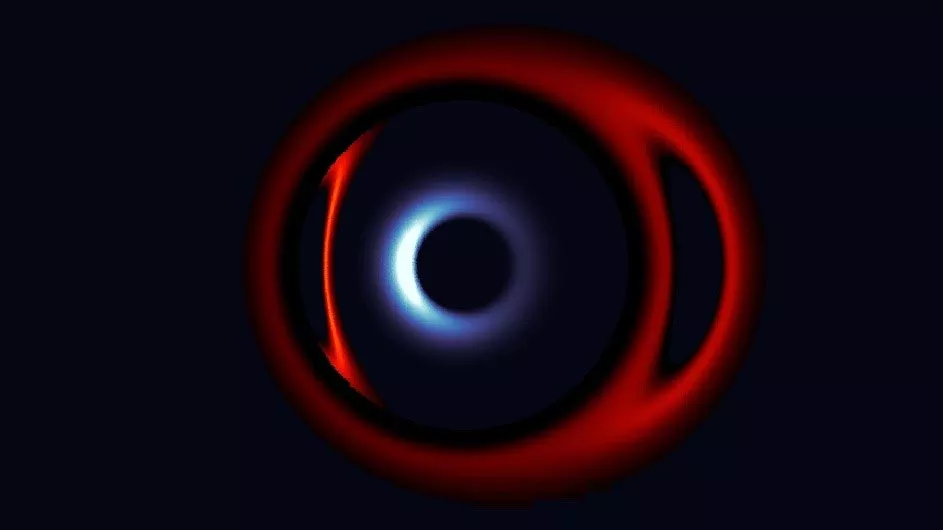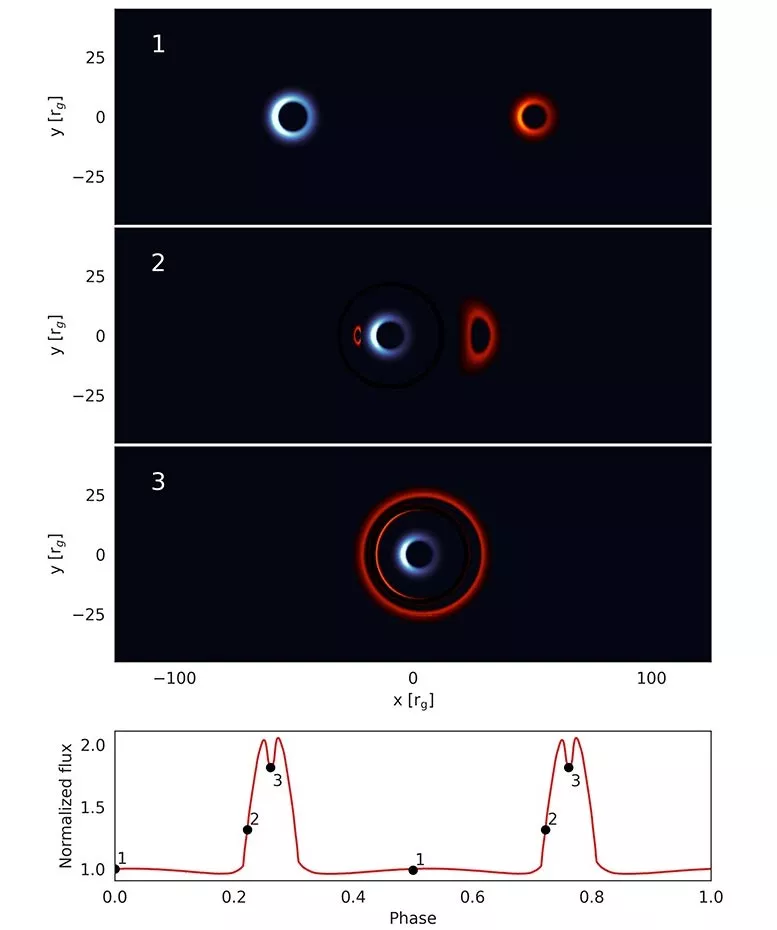Three years ago, the world was shocked by the first image of a black hole in history - a nothingness black hole surrounded by a glowing halo. This iconic image of the black hole at the center of Messier 87 galaxy was focused thanks to the event horizon telescope (EHT). This is a global network of synchronous radio antennas.

Now, a pair of researchers at Columbia University have devised a method that may make it easier to stare into the abyss. In their supplementary studies published in Physical Review Letters and Physical Review D, they described a new imaging technology that allows astronomers to study a monster smaller than M87, with a mass of 6.5 billion suns and hidden in galaxies more distant than M87.
There are only two requirements for the use of this technology: first, a pair of supermassive black holes in the throes of merger; Second, we need to observe the pair of black holes from an almost sideways angle. From the favorable position on this side, when a black hole passes in front of another black hole, it should be able to see a bright flash. This is because the luminous ring of the distant black hole is amplified by the black hole closer to the observer. This phenomenon is called gravitational lens.
Although the lens effect is well known, what the researchers found here is a hidden signal: a significant decrease in brightness corresponding to the "shadow" of the black hole behind it. This subtle dimming can last from hours to days, depending on how massive the black holes are and how tightly their orbits are intertwined. The researchers pointed out that if the duration of this dimming can be measured, the size and shape of the shadow cast by the event horizon of the black hole can be estimated. The event horizon is a point where there is no exit, where nothing can escape, not even light.

"It took several years and the great efforts of dozens of scientists to produce a high-resolution image of the M87 black hole. This method only applies to the largest and nearest black holes - a pair of black holes at the M87 Center - and possibly our own Milky Way galaxy," said Jordy davellar, the lead author of the study and a postdoctoral fellow at the center of computational astrophysics at Columbia University's Institute of peace
In addition, he added: "with our technology, you measure the brightness of black holes over a period of time, and you can find this signal in many galaxies without solving each celestial body in space."
The shadow of a black hole is not only its most mysterious feature, but also its most informative feature. "That black spot tells us the size of a black hole, the shape of the space-time around it, and how matter falls near the black hole's horizon," said Zoltan Haiman, a professor of physics at Columbia University and co-author of the study

The shadow of a black hole may also contain the secret of the true nature of gravity, which is one of the basic forces of our universe. Einstein's theory of gravity, general relativity, predicted the size of black holes. So physicists look for them to test other theories of gravity, trying to reconcile two competing ideas about how nature works. Einstein's general relativity explains large-scale phenomena such as planetary motion and cosmic expansion, while quantum physics explains how small particles such as electrons and photons can occupy multiple states at the same time.
After discovering a pair of suspected supermassive black holes in the center of a distant galaxy in the early universe, researchers became interested in burning supermassive black holes. NASA's planet Hunter Kepler space telescope is scanning for small drops in brightness. Eventually, Kepler detected a flare that Haiman and his colleagues claimed was a pair of merged black holes.
They named the distant galaxy spike because its suspected black hole magnifies each other through the lens effect each time it rotates, causing a peak in brightness. To learn more about flares, Haiman and his postdoctoral davelaar built a model.
However, when they simulated a pair of black holes, each time they ran in front of another black hole, they were confused by an unexpected but periodic decline in brightness. At first, they thought it was a coding error. But further examination convinced them of the signal.
When they looked for a physical mechanism to explain it, they realized that each decline in brightness was closely related to the time that the black hole closest to the observer passed in front of the shadow of the black hole behind it.
Right now, researchers are looking for other telescope data and trying to confirm the depressions they see in Kepler data to verify that spike actually harbors a pair of merged black holes. If all this is confirmed, the technology will be applied to other suspected merged supermassive black holes. It is reported that these black holes have been found and are waiting for confirmation.
With more powerful telescopes coming online in the next few years. The Vera Rubin Observatory, which is scheduled to open this year, has focused on more than 100 million supermassive black holes. When NASA's gravitational wave probe Lisa is launched into space in 2030, further reconnaissance of black holes will be possible.
"Even if only a small fraction of these black hole binaries have the right conditions to measure our proposed effects, we can find many such black hole depressions," davelaar said.